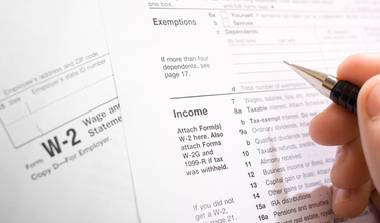As an employer, you are required to uphold the responsibility of payroll taxes. As such, you must also ensure that you understand what the rules are, especially due to how complex they are in nature.
First and foremost, a good place to start is by ensuring that you are aware of these three types of taxes, which you will need to send to the government.
- Federal income taxes: Employees are required to pay federal income tax, though it is not a tax that they pay directly. Instead, employers withhold federal income taxes from their employees’ paychecks.
- FICA taxes: These refer to either Social Security taxes or Medicare taxes that you withheld from all of your employees during the year, plus the amount of money that you are required to match as the employer.
- Federal unemployment taxes: The amount you owe in terms of federal unemployment taxes is calculated by looking at your total gross payroll. Federal unemployment taxes are based on how much you paid your employees, even though employees don’t pay federal unemployment taxes. Only employers pay these taxes.
Every quarter, employers must report all wages, tips, and any other form of compensation that they paid to their employees. Employers are also required to report the federal income tax that they withheld as well as Social Security and Medicare taxes. As an employer, you must deposit the federal income tax that you withheld, in addition to both the employer’s and the employee’s Social Security taxes and Medicare taxes. You can do so on either a monthly or a semiweekly basis. The frequency at which you deposit these taxes will depend on the dollar amount of your tax bill, not on the frequency at which you, as an employer, pay your employees.
Know the details
There are three types of payment schedules when it comes to paying employment taxes, and those include either semiweekly, monthly, or next-day deposits. The schedule you must follow when depositing employment-based taxes will depend on your specific situation, so be sure to look at Form 15 and Form 51 to determine the schedule applicable to your situation.
If you are required to deposit taxes in accordance with the monthly schedule, your payments are due on the 15th of the month following the month in which you paid your employees. As an example, if you paid your employees in November, your tax deposits must be submitted by December 15 at the very latest.
For those of you depositing money on a semiweekly basis, here is when you can expect to deposit money based on which day of the week you paid your employees:
- For payroll that was paid on either Saturday, Sunday, Monday, or Tuesday, submit the tax deposits by the following Friday.
- For payroll that was paid on either Wednesday, Thursday, or Friday, deposit the taxes by the following Wednesday.
If you owe $100,000 or more in employment taxes, you must adhere to the next-day deposit schedule. This is when you are required to deposit employment taxes the day immediately after you paid your employees. You must also uphold the next-day deposit schedule for the rest of the year, as well as the next year.
With the next-day payment schedule, there aren’t any penalties imposed if errors in deposits are made as long as those deposit errors do not exceed either $100 or 2% of employment tax value that you are depositing. However, in order to avoid penalties altogether, employers must ensure that they account for the error and pay it as soon as possible.
Special rules for FUTA
When making deposits for the Federal Unemployment Tax Act, otherwise known as FUTA taxes, you will need to use Form 940. Deposits for FUTA taxes are required if the applicable tax due exceeds $500 within one quarter. You will need to deposit the FUTA tax value by the end of the month that follows the end of each quarter. When depositing federal taxes, you will pay via electronic funds transfers via the EFTP system. If you do not submit your deposit in a timely manner, then you run the risk of accruing a 15% penalty.
If you are looking for specific forms, take a look at Publication 15 when you are in search of Form 941, Form 944, or Form 945. Alternatively, if you need Form 943, review Publication 51 to learn more about the specific IRS details pertaining to payroll deposits.
Form W-2, or the Wage and Tax Statement form, is the way by which employers report the wages, tips, and various other types of compensation earned by their employees. The W-2 form must be completed by the end of each tax year. Start by filing Copy A. When filing W-2 forms, send them along with Form W-3, or the Transmittal of Wage and Tax Statements form, to the Social Security Administration Office. On the contrary, you will want to file Copy 1 with each employee’s state or local tax department.
It makes sense that many businesses turn to a payroll service or payroll software when they need help with understanding the details of tax employment forms and make deposits on behalf of employers. Make sure the software you are utilizing has the ability to remind you when your payments are due.
Note that this article may have taken copy directly from public documents on the IRS site. However, that is not necessarily the whole story. Also, a payroll service or software system will not excuse you from staying on top of deadlines or upholding your responsibilities as an employer, but it does make the employment tax filing process a lot more streamlined.

